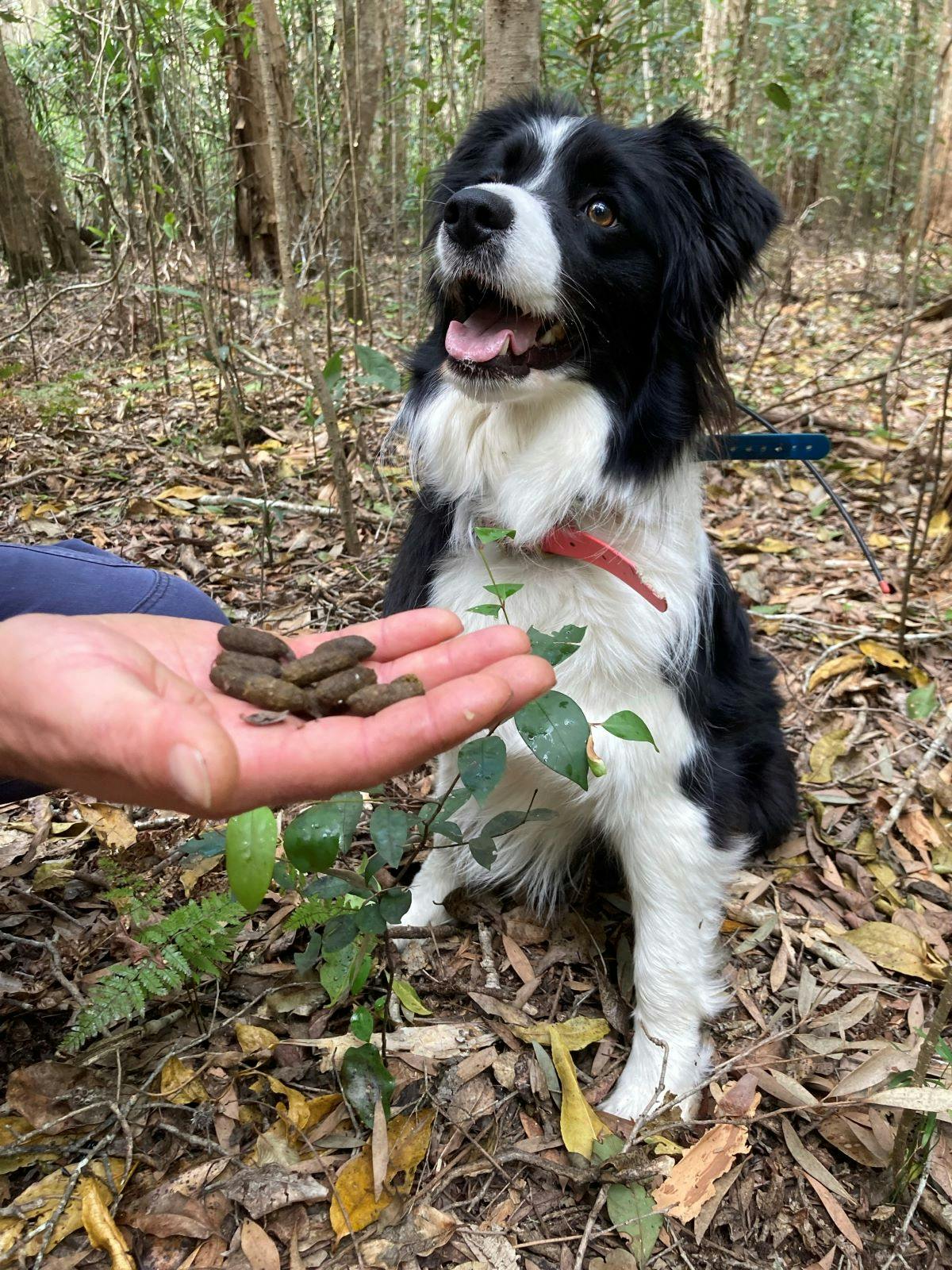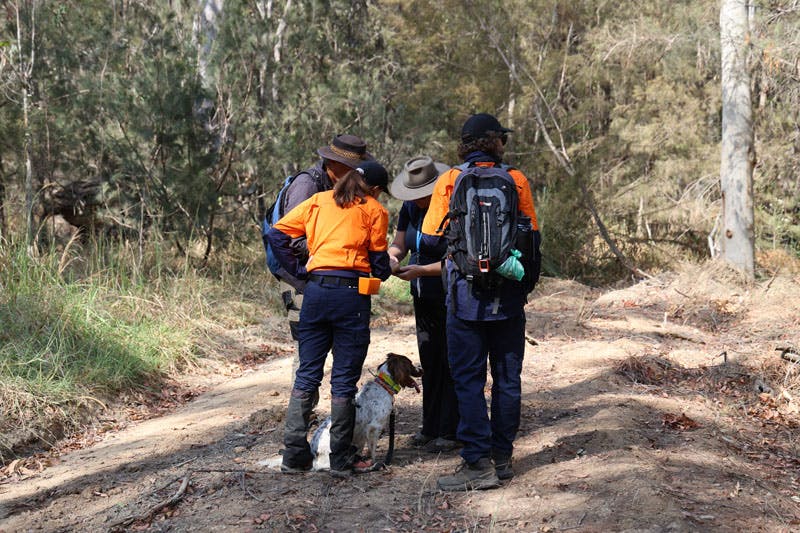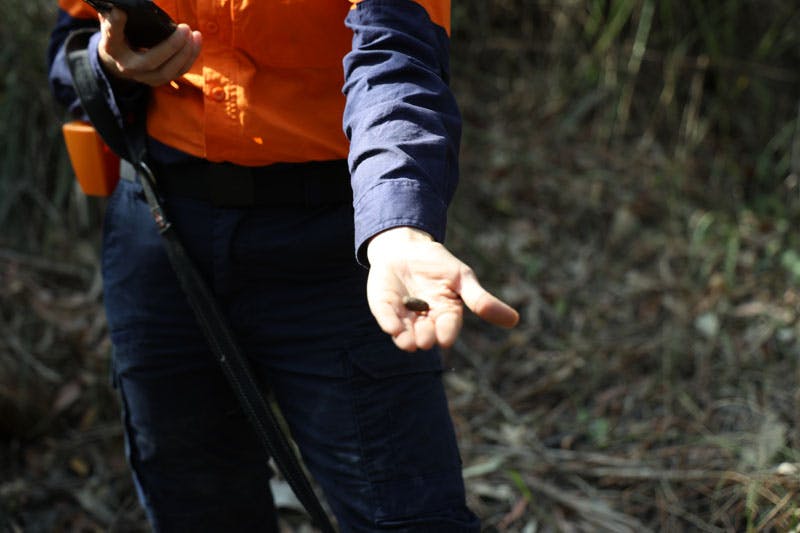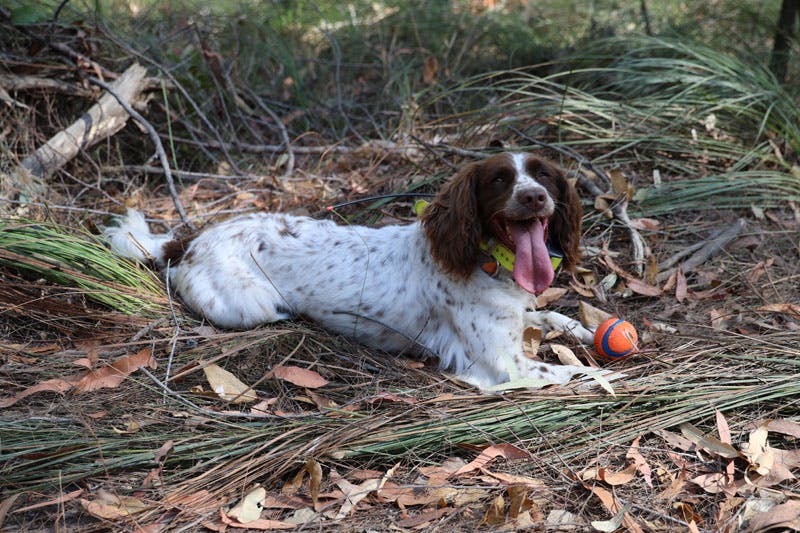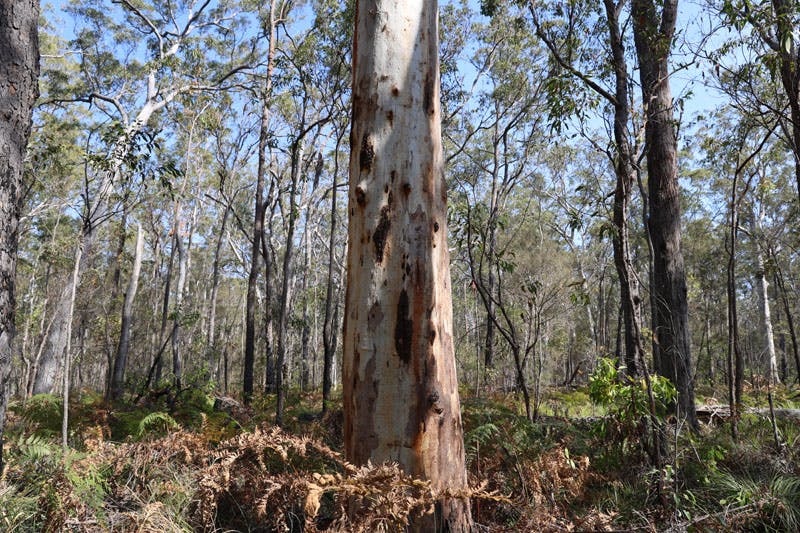Conserving Koalas for years to come
Consultation has concluded
The Kempsey Koala Habitat Mapping project goal is to create maps that show where koalas live in the Kempsey Shire. These maps will provide vital information to plan for the future, protect, and manage these areas in a way that supports the survival of koalas.
Council has received funding of up to $300,000 from the NSW Government to develop koala habitat maps in the eastern part of the shire, as outlined in the Kempsey Shire Council Comprehensive Koala Plan of Management.
How will we create the maps?
To find koalas and their habitat, we will use the latest technology, which includes two main methods: vegetation assessment and koala occupancy surveys.
During the vegetation assessment, a botanist examines the surveyed vegetation to determine if it is suitable as koala habitat.

Photo credit: Canine for Wildlife
For koala occupancy surveys, a specially trained koala detection dog and a handler/ecologist work together. The dog is trained to detect koalas by sniffing around trees and showing specific behaviours, such as bouncing on the side of a tree where a koala is present. The dog can also detect koala droppings, even if they are several months old, by sniffing the ground and wagging its tail.
These survey methods will provide valuable information about the presence of koala habitat and koalas in the Comprehensive Koala Plan of Management area, assisting Council in making informed decisions for the conservation and management of these important areas for koalas.
This project is part of the NSW Koala Strategy, which aims to double the koala population in NSW by 2050 and has allocated over $190 million for various initiatives.
Who is involved?
Landholders meeting the following criteria will be contacted about involvement in this project.
First, your property is located within the current Comprehensive Koala Plan of Management area, which is the specific area focused on for mapping koala habitat.
Second, one or more of the following criteria have been met:
Presence of koala feed trees: If your property has trees that are known to be a food source for koalas, it increases the likelihood of koalas using that habitat.
Evidence of koalas on your property: If there have been past records of koalas on your property, such as documented sightings or other historical information, it indicates that koalas have previously inhabited the area.
Koala detection dogs in action
Taylor, a 5-year-old English Springer Spaniel owned by Ryan Tate (Tate Animals) has been trained to prioritise the scent of live koalas and sit as close to it as she can.
If she is unable to locate the live animal, she will lie down with her nose in front of their scat. In ideal conditions, Taylor can recognise and locate a koala from 125 metres away. Taylor always works off lead, and covers between 10- 35kms every day she is in the field.
The Port Macquarie Koala Hospital | Koala Conservation Australia Ltd
Regional Koala Conservation Partnership
The NSW Government is funding a Regional Partnership with Koala Conservation Australia to fast-track actions to restore and improve koala habitat in the Port Macquarie and Kempsey region, which Council contributes to.

